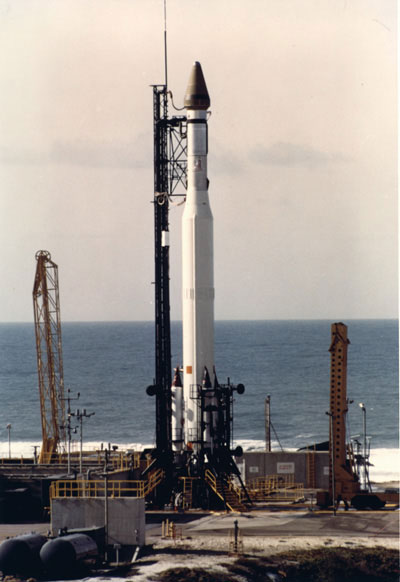Wraps Come Off Cold War SpySat Program

More light has been shed on a once secret Cold War spysat program.
The National Reconnaissance Office (NRO) has released images of the POPPY system, a series of satellites built to scout out land based radar emitters in the former Soviet Union, as well as collect radar emanations from Soviet naval vessels.
This type of surveillance from space is dubbed electronic intelligence, or ELINT for short.
Last month, on September 12, the NRO formerly announced that the POPPY satellite system had been declassified.
The newly released pictures show technicians with the spacecraft and the satellite itself, its Thor-class launcher sitting on a pad at the Vandenberg Air Force Base in California, as well as associated ground hardware used to operate the system.

There were seven launches of POPPY spacecraft from 1962 to 1971, with the POPPY program operating from December 1962 through August 1977.

POPPY was the successor to America's first ELINT satellite known as "GRAB" - standing for Galactic Radiation and Background.
Get the Space.com Newsletter
Breaking space news, the latest updates on rocket launches, skywatching events and more!
Originally developed by the Naval Research Laboratory, POPPY became a multi-agency system when the NRO was established in 1962, shortly before the satellite's first launch. The National Security Agency was also assigned the job of receiving, analyzing, and reporting findings derived from the intercepted radar signals from POPPY.
- Secret Cold War Spy Satellite Program Declassified by U.S.
- Anatomy of a Spy Satellite
- Secret Satellite Photos To Be Unveiled
- Project Echelon: Orbiting Big Brother?
Join our Space Forums to keep talking space on the latest missions, night sky and more! And if you have a news tip, correction or comment, let us know at: community@space.com.

Leonard David is an award-winning space journalist who has been reporting on space activities for more than 50 years. Currently writing as Space.com's Space Insider Columnist among his other projects, Leonard has authored numerous books on space exploration, Mars missions and more, with his latest being "Moon Rush: The New Space Race" published in 2019 by National Geographic. He also wrote "Mars: Our Future on the Red Planet" released in 2016 by National Geographic. Leonard has served as a correspondent for SpaceNews, Scientific American and Aerospace America for the AIAA. He has received many awards, including the first Ordway Award for Sustained Excellence in Spaceflight History in 2015 at the AAS Wernher von Braun Memorial Symposium. You can find out Leonard's latest project at his website and on Twitter.









